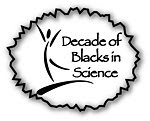Botanicals I observed and photographed in Rennes, France while I was attending the 2009 International Ethological Conference.
Thabor Park, Rennes
As I explored Tabor Park, I realized there were many trees from many regions of the world - the US and Asia.
~~~~~~~~~~~~~
 A Magnolia tree, also in the US. It is the state tree of Mississippi and common throughout the south, but I have also seen them in the mid-west, though not as abundant.
A Magnolia tree, also in the US. It is the state tree of Mississippi and common throughout the south, but I have also seen them in the mid-west, though not as abundant.Thabor Park, Rennes
~~~~~~~~~~~ ~~~~~~~~~~~~ 

This trees's branches were so heavy that the understory felt like it was dark outside. The berries of the tree really stood out from the dark rich green evergreen needle-leaves.
 I tasted the berry. It was very juicy and very sweet. I didn't swallow it because I wasn't sure it was safe, but I liked the taste, almost like candy.
I tasted the berry. It was very juicy and very sweet. I didn't swallow it because I wasn't sure it was safe, but I liked the taste, almost like candy.

 I tasted the berry. It was very juicy and very sweet. I didn't swallow it because I wasn't sure it was safe, but I liked the taste, almost like candy.
I tasted the berry. It was very juicy and very sweet. I didn't swallow it because I wasn't sure it was safe, but I liked the taste, almost like candy. War Veterans Memorial Park, Rennes
******************




This was one ugly tree, and I don't normally like to call trees ugly. The fruits and branches were just unlike anything I had seen before. But it was impressive. I sat underneath this tree for a while.
War Veterans Memorial Park, Rennes
~~~~~~~~~~~~~~


 Close-up of this pine cone. Notice the clear sticky sap dripping from it.
Close-up of this pine cone. Notice the clear sticky sap dripping from it.


I was pleasantly surprised to see this tree species - the Mimosa, known by it's fluffy light pink flowers and pinnate shaped leaves. Fallen, decaying flowers on the ground
Fallen, decaying flowers on the ground
 Fallen, decaying flowers on the ground
Fallen, decaying flowers on the groundWar Veterans Memorial Park, Rennes
~~~~~~~~~~~~~~~~~~~~~~~~~~
 Tall pine tree with up-right fruits - pine cones.
Tall pine tree with up-right fruits - pine cones.

 Tall pine tree with up-right fruits - pine cones.
Tall pine tree with up-right fruits - pine cones.
 Close-up of this pine cone. Notice the clear sticky sap dripping from it.
Close-up of this pine cone. Notice the clear sticky sap dripping from it.Thabor Park, Rennes
*******************************************
near Saint Anne, Rennes
near Saint Anne, Rennes
******************


 This was an odd-growing tree. It seemed to be all brambles and then you look up and notice a very tall and straight trunk in the middle of all of that.
This was an odd-growing tree. It seemed to be all brambles and then you look up and notice a very tall and straight trunk in the middle of all of that.


 This was an odd-growing tree. It seemed to be all brambles and then you look up and notice a very tall and straight trunk in the middle of all of that.
This was an odd-growing tree. It seemed to be all brambles and then you look up and notice a very tall and straight trunk in the middle of all of that.































5 comments:
I always wondered where the word Catalpa came from. Didn't know it was a tree. It's the name of a street somewhere I used to live.
Also didn't know the pink feathery leaf tree was a Mimosa. I always thought is was a nuisance but the name gives me a better appreciation for it now.
What is meant by "mast time"?
Probably a good call not swallowing that yew (Taxus) fruit - the fruit itself is not dangerous but the seed (and foliage) is extremely poisonous!
Mast time: means when nuts, all mature and fall altogether. The idea is that since animals eat these seeds, the trees produce more than enough -for the animals to eat, some thatjust won't grow, get crushed, etc - that still there willbe plenty to survive to make new trees.
Masting normally occurs in cycles, every few years or so.
Thanks Neil for the details, I'm not surprised. That's why I only taste, never swallow or ingest.
Incidentally, I feel just fine no side effects.
The tree with the big, sticky cones... it looks like an Atlas cedar to me. The first time I saw one I was so impressed that I had to take a cone: http://www.treeblog.co.uk/viewpost.php?id=163
Post a Comment